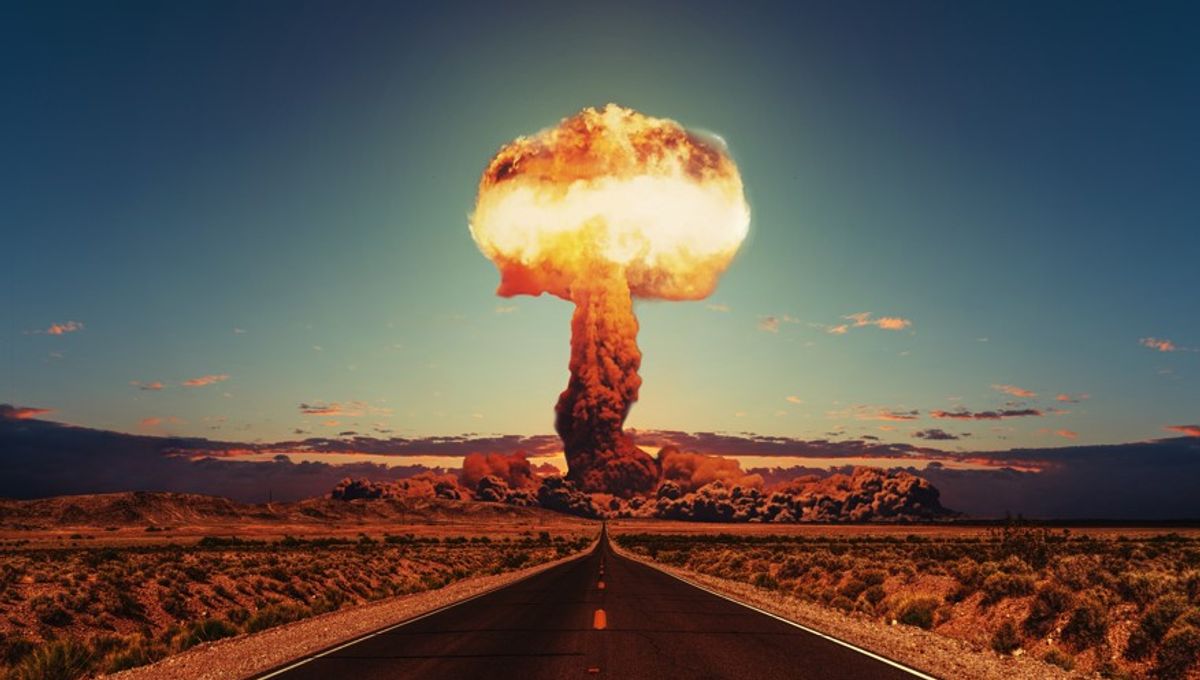
US President Donald Trump has revealed on social media that he has instructed the Pentagon (now known as the Department of War) to resume nuclear weapons testing in the United States for the first time in 33 years. According to Trump, the decision to conduct the highly controversial tests stems from a need to keep up with countries such as Russia and China, who he says are becoming increasingly tooled up.
What Are Other Countries Doing?
Since 1945, more than 2,000 nuclear weapons tests have been conducted worldwide, with 1,054 of these carried out by the US military. However, the end of the Cold War saw a massive reduction in practice detonations, which essentially ground to a halt when the Comprehensive Nuclear-Test-Ban Treaty (CTBT) was opened for signature in 1996.
As it happens, the CTBT has yet to officially come into force as several signatories – including the US – never actually ratified the treaty. Despite this, the agreement has been respected and upheld worldwide, with North Korea the only country on the planet to conduct a nuclear weapons test this century. The most recent of these occurred in 2017.
However, while neither Russia nor China has tested any warheads, both do appear to be strengthening their nuclear arsenals. Just last week, Russia successfully tested two long-range missiles that could potentially be armed with nuclear warheads, while Trump says that China will probably possess the same number of nuclear weapons as the US “within five years”.
Who Has The Most Nuclear Weapons?
In his Truth Social post announcing the plan, Trump stated, “The United States has more Nuclear Weapons than any other country,” listing Russia as second, and China as a distant third. He also wrote that this “was accomplished, including a complete update and renovation of existing weapons, during my First Term in office.”
It’s true, most of the world’s nukes are owned by the US and Russia. And when we say “most,” we mean “almost all”: there are around 12,241 nuclear weapons on the planet as of 2025, and an estimated 90 percent – nine out of every 10 nukes across the entire world – belong to one of these two countries.
However, official statistics suggest Russia actually has the most. The Arms Control Association has Russia with 5,580 and the US with 5,225. The International Campaign to Abolish Nuclear Weapons has Russia with a confirmed 5,449 and the US with 5,277. The Federation of American Scientists has the number of nuclear warheads owned by both as of early 2025: Russia with 4,309 (1,150 retired) and the US with 3,700 (1,477 retired). All seem to agree China has 600.
Is There A Need For Nuclear Testing?
In the 33 years since the US last detonated a nuclear bomb in the Nevada Desert, the Pentagon has been keeping tabs on the state of its weapons via its stockpile stewardship program, which conducts “subcritical” experiments to test the condition of nuclear warheads. Many scientists believe that these tests provide all the information the military could ever need regarding its nuclear weapons, and that there’s absolutely no necessity to go back to live testing.
On the other hand, the US ceased producing plutonium pits – which act as triggers for nuclear warheads – in 1989, which means the country’s current stockpile is several decades old and may have lost functionality due to natural radioactive decay. To address this, the military recently announced plans to ramp its production of weapon-ready plutonium pits, with the first of these approved for use last year.
Some scientists therefore think that nuclear tests are in fact necessary in order to verify the quality of plutonium pits produced using new manufacturing methods.
What Happens Next?
Trump’s statement provided no details on the kinds of tests that will be carried out, and it’s not clear if these will involve the detonation of any actual warheads. In fact, there’s no consensus on what even counts as a “nuclear weapons test”, and the term can technically be applied to tiny explosions with minimal impact.
This is because the CTBT is a “zero yield” treaty, which means it bans all experiments that result in a net release of energy – no matter how small. In reality, though, this term is something of a nonsense, as plutonium pits are constantly giving off tiny amounts of radiation, even when they aren’t being used.
The US and Russia have therefore come to different interpretations of exactly which types of tests are proscribed by the treaty – although both agree that large-scale detonations are definitely out of bounds. Trump’s announcement gives the Pentagon permission to conduct experiments that surpass their own definition of “zero yield”, but doesn’t explicitly order any mushroom clouds.
What’s clear, however, is that the world is on the precipice of a new age of nuclear uncertainty. As it stands, there’s only one remaining nuclear arms treaty between the US and Russia – the so-called New START Treaty – but that’s set to expire in February 2026.
That treaty was also unlikely to prevent an apocalypse, as it limited both countries to “only” 1,550 nuclear warheads deployed on intercontinental ballistic missiles. However, with even that seemingly arbitrary restriction about to vanish, and the CTBT now also being overridden, there’s now a greater need than ever for new regulations regarding nuclear weapons testing.
Source Link: Trump Orders First Nuclear Weapons Test In The US Since 1992 - Here’s What You Need To Know